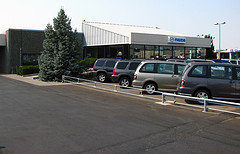
flic.kr/p/n7gFk
Consumer demand for sport utility vehicles is weakening, according to recent transaction data from the Power Information Network (PIN). The data show that the number of days SUVs sit on dealer lots before selling has increased substantially over 2003. SUV prices have also declined while average new-vehicle prices have increased. To counter the downward trend manufacturers have increased incentives more on SUVs than they did on any other type of new vehicle from June to July.
The number of days SUVs are on dealer lots (days to sell) increased from 60 days in July 2003 to 73 days in July 2004–a 22 percent increase. Days before sales for luxury SUVs increased by 47 percent versus the year previous, more than double the industry rate, as these vehicles sat on dealer lots for 50 days in July 2004 versus 34 days a year ago. Perhaps the biggest indicator of weakening demand for sport utility vehicles: the average SUV transaction price dropped two percent (or $620) in July versus a year ago, while overall new-vehicle prices edged up slightly. Luxury SUVs exhibited the most weakness, as the average price slid almost five percent.
To recapture consumer interest, vehicle manufacturers increased SUV incentives in July. The average total incentive expenditure per SUV in July was $3,440, up nearly 12 percent from June. This increase was almost twice the overall industry average increase.
“The data clearly suggest the SUV segment is under exceptional pressure,” said Tom Libby, senior director of industry analysis at PIN. “Higher gas prices and a renewed emphasis on cars by some of the OEMs have both likely played a role in this trend.”
Tagged with: sports utility vehicle • SUV
Filed under: Buy A Car